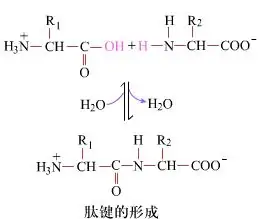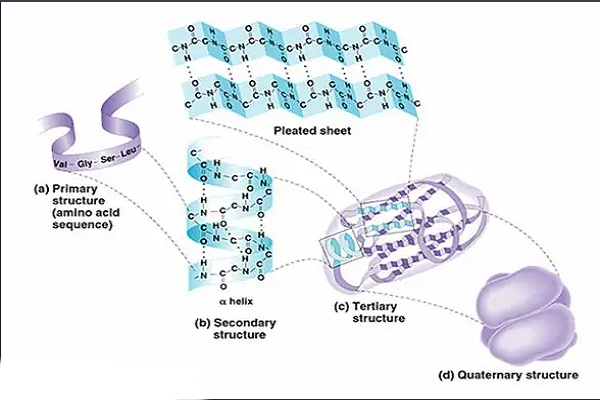On the surface, the formation of peptide bonds, yielding dipeptides, is a simple chemical process. This means that the two amino acid components are linked by a peptide bond, an amide bond, while being dehydrated.
Peptide bond formation is the activation of an amino acid under mild reaction conditions. (A) carboxyl moiety, second amino acid (B) The nucleophilic activated carboxyl moiety then forms the dipeptide (A-B). “If the carboxyl component (A) is not protected, the formation of the peptide bond cannot be controlled.” By-products such as linear and cyclic peptides may be mixed with target compounds A-B. Therefore, all functional groups not involved in peptide bond formation must be protected in a temporarily reversible manner during peptide synthesis.
So, peptide synthesis — the formation of each peptide bond — involves three steps of aggregation.
The first step is to prepare some amino acids that need protection, and the zwitterionic structure of amino acids no longer exists.
The second step is a two-step reaction to form peptide bonds, in which the carboxyl group of the N-protected amino acid is first activated to the active intermediate and then the peptide bond is formed. This coupled reaction can occur either as a one-step reaction or as two sequential reactions.
The third step is the selective removal or complete removal of the protective base. Although all removal can only occur after all peptide chains have been assembled, selective removal of protective groups is also required in order to continue peptide synthesis.
Because 10 amino acids (Ser, Thr, Tyr, Asp, Glu, Lys, Arg, His, Sec and Cys) contain side chain functional groups, which require selective protection, making peptide synthesis more complicated. Temporary and semi-permanent protection bases must be distinguished because of the different requirements for selectivity. Temporary protection groups are used in the next step to reflect the temporary protection of amino acid or carboxyl functional groups. Semi-permanent protective groups are removed without interfering with already formed peptide bonds or amino acid side chains, sometimes during synthesis.
“Ideally, activation of the carboxyl component and subsequent formation of peptide bonds (coupling reactions) should be rapid, without racemic or by-product formation, and molar reactants should be applied to achieve high yields.” Unfortunately, none of the chemical coupling methods satisfies these requirements, and few are suitable for practical synthesis.
During peptide synthesis, the functional groups involved in various reactions are usually linked to the manual center, glycine being the only exception, and there is a potential risk of rotation.
The final step in the peptide synthesis cycle is the removal of all protective groups. Selective removal of protective groups is important for peptide chain extension in addition to the requirement for complete removal of protection in dipeptide synthesis. Synthetic strategies should be carefully planned. Depending on the strategic choice, N can selectively remove the α-amino or carboxyl protecting groups. The term “strategy” refers to the sequence of condensation reactions of individual amino acids. In general, there is a difference between gradual synthesis and fragment condensation. Peptide synthesis (also known as “conventional synthesis”) takes place in solution. In most cases, gradual lengthening of the peptide chain can only be synthesized by using the peptide chain to synthesize shorter fragments. To synthesize longer peptides, the target molecules must be segmented into appropriate fragments and determined that they can minimize the degree of differentiation at the C terminus. After the individual fragments are gradually assembled, the target compound will be joined up. The strategy of peptide synthesis includes the selection of the best and most appropriate protective fragment, and the strategy of peptide synthesis includes the selection of the most appropriate combination of protective bases and the best method of fragment conjugation.
Post time: Jul-19-2023


